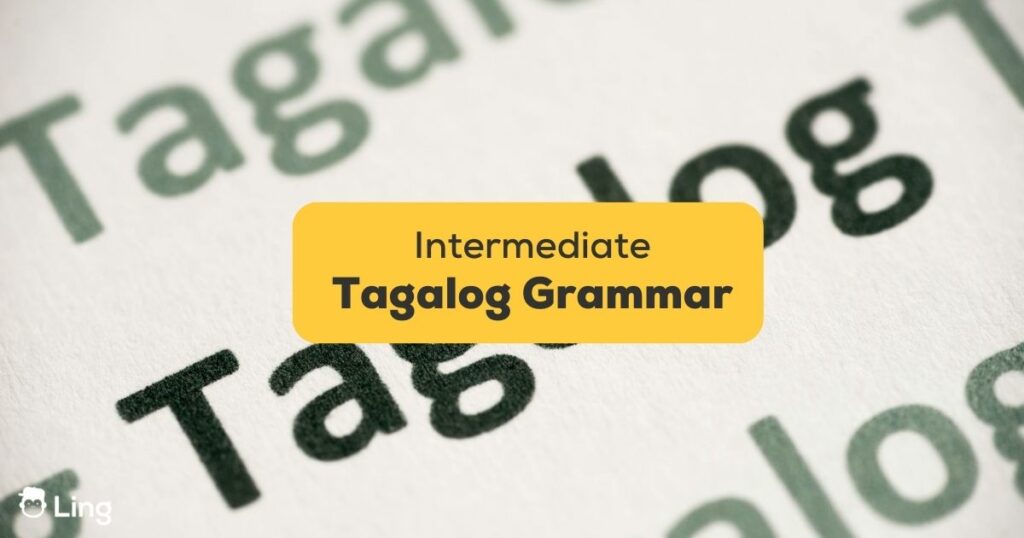So you’re already acquainted with basic Tagalog words and phrases, such as “Mabuhay!” (welcome), “Kumusta ka?” (how are you), and “Mahal kita” (I love you). Perhaps by now, you are now aiming to advance to intermediate Tagalog grammar. Don’t worry because I will help you with that! Let’s flesh out what you need to understand to construct grammatically correct Tagalog sentences and learn all the basic skills needed to speak Tagalog fluently.
Tagalog Language Grammar Basics: An Overview
If you want to speak fluent Tagalog, you must start with the basics. Here are some of the things you must know about Tagalog or Filipino, the national language of the Philippines:
Parts Of Speech In Tagalog
- Nouns (Pangngalan) = These are words that refer to people, things, ideas, or places.
- Pronouns (Panghalip) = These words are used to replace nouns, like “he,” “she,” or “it.”
- Verbs (Pandiwa) = Verbs are action words that change based on the tense, mood, focus, and aspect of the sentence.
- Adjectives (Pang-uri) = These words describe or give more details about nouns.
- Adverbs (Pang-abay) = Adverbs modify verbs, adjectives, or other adverbs to enhance their meaning.
- Conjunctions (Pangatnig) = These are words that connect phrases or sentences together.
- Prepositions (Pang-Ukol) = Prepositions show the relationship between nouns or pronouns and other elements in the sentence, often expressing location, direction, or time.
- Interjections (Padamdam) = These are words that express strong emotions and add feeling to a sentence.
Word Order In Tagalog Sentences
To make meaningful sentences in Tagalog or Filipino, you have to understand the subject-verb-object (SVO) word order. In Tagalog, grammatically correct sentences typically follow the sequence of subject-verb-object.
- The subject is the focus of the sentence.
- The verb explains what the subject is experiencing or doing.
- The object pertains to the recipient of the subject’s action.

Intermediate Tagalog Grammar
Now that we have briefly covered the basics, we can move forward to learning various sentence constructions to achieve greater fluency in Filipino. If you want to take a step back and review Tagalog for beginners, we have articles that cover basic Tagalog grammar.
Expressing Past, Present, And Future Tenses
To make carefully structured sentences in Filipino, you must accurately express the tenses: present, past, and future. Here are some samples of conversations demonstrating the usage of tenses in Filipino:
| Pangkasalukuyan (Present Tense) | Pangnagdaan (Past Tense) | Panghinaharap (Future Tense) |
|---|---|---|
| Tumatakbo ako. (I am running) | Tumakbo ako. (I ran) | Tatakbo ako. (I will run.) |
| Nagbabasa siya ng libro. (He/She is reading a book. | Nagbasa siya ng libro. (He/She read a book) | Magbabasa siya ng libro. (He/She will read a book.) |
| Umuulan! (It is raining) | Umulan. (It rained) | Uulan. (It will rain) |
| Kumakanta sila. (They are singing.) | Kumanta sila. (They sang.) | Kakanta sila. (They will sing.) |
| Kumakain si John ng saging. (John is eating a banana.) | Kumain si John ng saging. (John ate a banana.) | Kakain si John ng saging. (John will eat a banana.) |
Conditional Statements In Tagalog
You will often hear conditional statements used when people speak in real-life everyday situations in the Philippines. These statements express hypothetical conditions and possible outcomes. It can be used in the following scenarios:
- Situations that are likely to happen in the future.
Example: Kapag umulan, magdadala ako ng payong. (If it rains, I will bring an umbrella) - Situations that are possible but unlikely to happen.
Example: Kung manalo ako sa lotto, bibili ako ng bahay. (If I win the lottery, I will buy a house.) - Situations that are contrary to what actually happened.
Example: Kung hindi ka umalis, hindi sana tayo nagkahiwalay. (If you hadn’t left, we wouldn’t have parted ways.)

Expressing Desires And Wishes
A big part of standard Filipino conversations is expressing what you want. This is why you’ll often hear native speakers say everyday Tagalog words, such as “gusto” or “sana.” Here are some Filipino phrases expressing desires or wishes you might hear from native speakers or read in a news story or Philippine literature:
- “Gusto kong matutunan ang kahulugan ng mga salitang ito.” (I want to learn the meaning of these words.)
- “Sana’y magkaroon ka ng magandang araw!” (I hope you have a beautiful day!)
- “Nawa’y maging mas maayos ang iyong kalagayan.” (May your situation improve.)
While “nawa” or may is already somewhat deep, “sana” (hope) and “gusto” (want) are commonly included in a native speaker-level vocabulary.
Tagalog Grammar Tips To Help You Speak Fluent Tagalog/Filipino
To develop valuable conversational skills in Tagalog, you must undergo carefully constructed lessons and learn how to spot common grammatical errors. Is it hard to become fluent in the Filipino language? As long as you put your heart into it, “walang imposible” (nothing is impossible).
Here are some tips that can help you read Tagalog, learn to speak the language, or even develop a specific writing skill using what you’ve learned:
- Read Tagalog books and similar references, whether a news story or a newspaper article, literary pieces, and more, to expand your vocabulary and become familiar with sentence structures.
- Speak with native speakers whenever you can. This way, you will know not only the right usage but the tone you must use in saying certain words and phrases.
- Watch Tagalog films and TV shows with English subtitles.
- Keep a journal where you will write down all Tagalog words you’ve learned and how they are used.
- Practice speaking or writing the language every day.
By incorporating these grammar tips and engaging in practice exercises, you’ll soon find yourself speaking Tagalog with greater fluency and accuracy.
Use The Ling App To Become Fluent In Tagalog Faster
Language learners these days have the advantage of using technological innovations to become better at whatever language they’re trying to learn faster. Thanks to apps like Ling, you can practice learning whenever you have time. Moreover, Ling makes the process more fun with interactive and AI-assisted activities.
With Ling, you can test your intermediate Tagalog grammar using engaging exercises, including games, comprehension questions, and quizzes. See for yourself how Ling can help you learn Tagalog and other foreign languages faster. Get it now at the Play Store or App Store for FREE!



































































